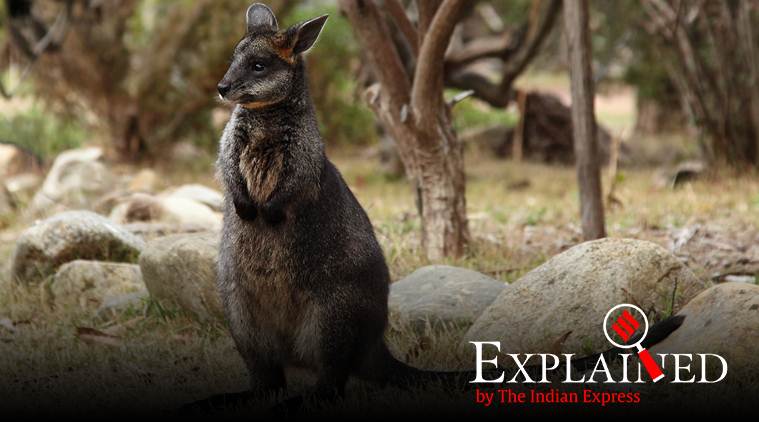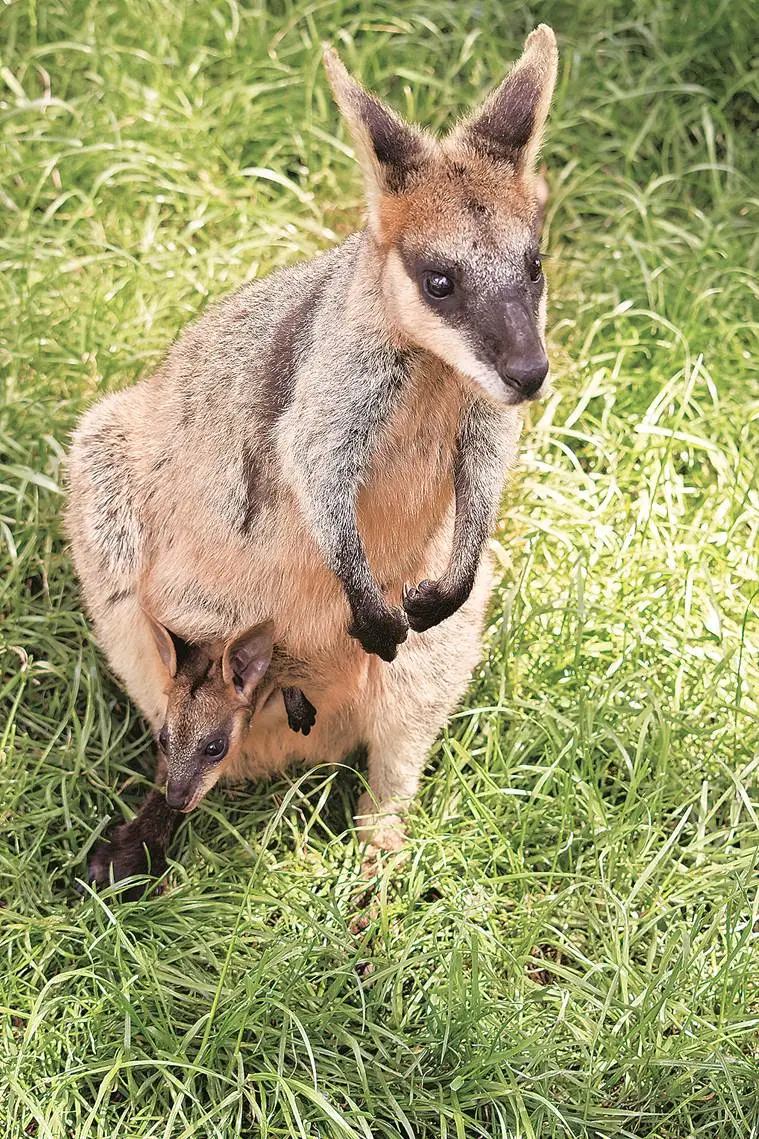- India
- International
Explained: How does the swamp wallaby stay pregnant all its life?
The swamp wallaby is likely the only mammal pregnant and lactating all life long, researchers have said. How is it possible?
 The swamp wallaby conceives while already pregnant. (Source: Wikipedia)
The swamp wallaby conceives while already pregnant. (Source: Wikipedia)
On Monday, researchers reported that the swamp wallaby, a marsupial related to the kangaroo, is pregnant throughout its adult life. It typically conceives a new embryo days before delivering the newborn from its previous pregnancy.
The swamp wallaby is likely the only mammal pregnant and lactating all life long, said the researchers, from the University of Melbourne and the Leibniz Institute for Zoo and Wildlife Research, Berlin. Their study is published in the journal PNAS (Proceedings of the National Academy of Sciences of the USA).
How is it possible? Female wallabies and kangaroos have two uteri and two separate ovaries. At the end of a pregnancy in one uterus, a new embryo develops in the other uterus. Kangaroos and wallabies regularly have an embryo in the uterus, a young joey in the pouch, and a third semi-dependent young at foot, still drinking its mother’s milk.
There is a difference, however. In kangaroos, the new embryo is conceived a day or two after the previous birth. In the swamp wallaby (Wallabia bicolor), the new conception happens one or two days before the previous joey is delivered, the researchers said, after having used high-resolution ultrasound to track pregnancy and mating in 10 female swamp wallabies.
 The swamp wallaby conceives while already pregnant. (Getty Images)
The swamp wallaby conceives while already pregnant. (Getty Images)
What happens after: As soon as the mature foetus is born and settles in the pouch, the swamp wallaby arrests the development of the new embryo. This is called embryonic diapause, which happens in many animals to pause reproduction until the conditions are right — season, climate, food availability. For wallabies, this is also to ensure that the new one is born only when the pouch is free again. If this did not happen, the swamp wallaby would be birthing new young every 30 days — it has a short gestation period — and its pouch could not support that.

The hare parallel: There is only one other mammal, the European brown hare (Lepus europaeus), that conceives additional embryos before giving birth. There are, however, two key differences. In the hare, the new embryos are conceived in the same uterus that is already supporting foetuses in late stages — which, the researchers note, may be all the more remarkable. The other difference is that only the swamp wallaby is pregnant all its life. “The hare is only pregnant with the possibility of conceiving new embryos during distinct breeding seasons over about 5-6 months of the year. The rest of the time it is not pregnant or lactating at all,” Dr Brandon Menzies of the University of Melbourne, one of the researchers, told The Indian Express by email.
📢 Express Explained is now on Telegram. Click here to join our channel (@ieexplained) and stay updated with the latest
Why it matters: Apart from the general finding, it can tell us much about the broader evolution of reproductive trends in mammals, Menzies said. Most mammals have long pregnancies that surpass the length of the oestrous cycle — the fertile period when they mate and conceive. “Here we can see there is a marsupial that has continued pregnancy through the oestrous cycle for the first time, which tells us definitely that marsupials are not constrained by this time relative to all other mammals. It is not the general pattern in mammals to conceive during active pregnancy for many reasons,” he said. “… So by studying the swamp wallaby or animals that do things differently or uniquely, we can discover novel molecules or mechanisms that might have applications for human pregnancy or disease.”
More Explained
EXPRESS OPINION
May 07: Latest News
- 01
- 02
- 03
- 04
- 05








































